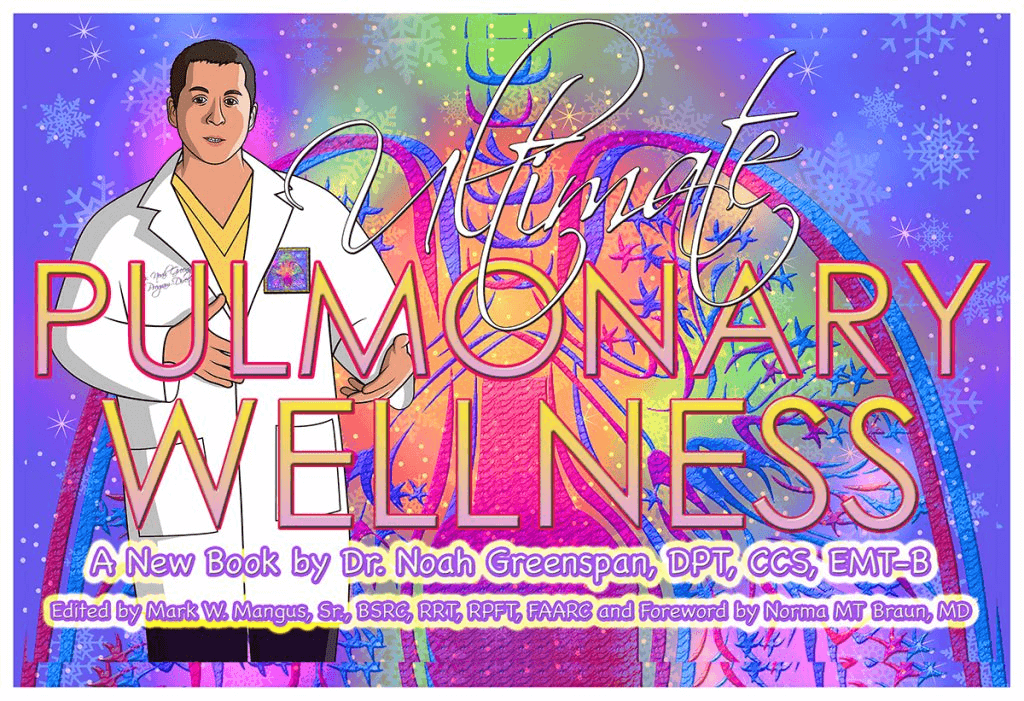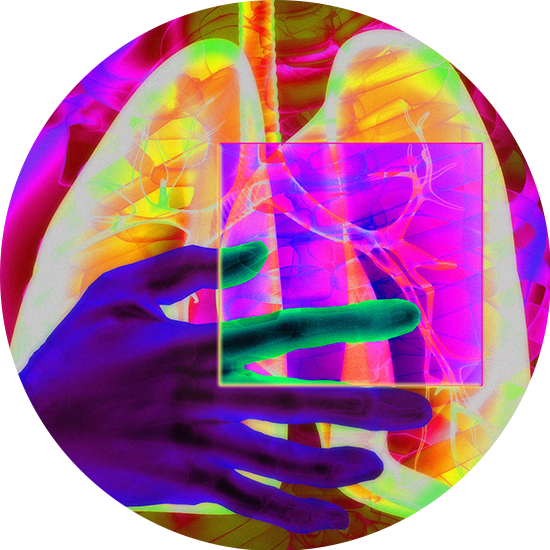
Exercise
Noah Greenspan, PT, DPT, CCS, EMT-B
“A body at rest will remain at rest and a body in motion will remain in motion, unless acted upon by an external force.” – Sir Isaac Newton’s First Law of Motion
One of my absolute core beliefs is that when it comes to health and wellness, exercise is by far, one of, if not the single best, most effective lifestyle change you can make and one of the most powerful tools to improve your health as well as your overall quality of life. By going from sedentary to active or from active to more active, you can reasonably expect to see improvements in many of your individual physical and physiological systems, as well as your body, and dare I say, your mind and spirit as well. I realize that this may seem a bit cliché (which I usually hate) or new age (which I don’t hate at all), but in this case, it happens to be true.
A basic fact of most exercise programs for most people is that you will generally get out of it what you put into it. Another basic fact is that not all people are created equal. Therefore, not all programs will have the same impact on everyone.
For all these reasons, I would be doing you a tremendous disservice if I were to tell you “This is exactly what you should be doing”. Instead, I will teach the principles that have been most successful for the greatest number of patients at the Pulmonary Wellness & Rehabilitation Center. I’ll also show you how to evaluate and make adaptations to your own program to ensure maximum safety, effectiveness and hopefully, maybe even a little fun.
PROFESSIONAL AND LEGAL DISCLAIMER: As I mention time and time again, my patients’ safety is my first, second and third priority. Therefore, as with any lifestyle change, please do not begin any exercise program under the misguided pretense that “Noah told me to do this” or “Noah told me to do that.” I did not, I am not, and I will not tell you what you should do. So please, regardless of anything you read in this book, always discuss any lifestyle changes you plan to make with your physician before you begin.
Why Exercise?
Exercise can increase not only the pumping power of your heart and the efficiency with which your body utilizes oxygen (which pretty much, everyone knows) but also, the mechanics of your respiratory system and lung function (which, not everyone believes). Exercise also strengthens your skeletal muscles, increases your bone density, reduces body fat, regulates blood sugar and blood pressure, elevates your mood, etcetera, etcetera, etcetera. And it makes you feel good! Maybe not at the exact moment you’re doing it, but when done right, the benefits of exercise will far outweigh any minor discomfort you may experience in carrying out your actual workout.
Notice that I said done right, because like anything else; if you do it wrong—and there are plenty of people doing it wrong—not only will you not achieve the best results, but you could do yourself harm.
“The First Cut is the Deepest”
I often say that the first minute in the gym is the hardest—in other words, just getting there. So, go. When I used to work at NYU, I had a daily dilemma. Every afternoon, when I arrived at the corner of 34th Street and Third Avenue, I could either continue 1 more block up 34th Street and go to the gym, or I could turn right on Third Avenue and go home to watch TV, eat, and sleep. It was quite literally a daily struggle. So, trust me. I understand. After all, if exercising were fun and easy, everyone would be in great shape.
However, for most people, once they’re at the gym (or physical therapy, or cardiopulmonary rehab), they usually don’t seem to mind it so much and they almost always feel better afterward. So, like Nike says, “Just do it.” I would take that axiom a step further and say, “Just do something”—anything, almost because it almost doesn’t matter which type of exercise you choose (within reason) if you do some form of activity every day. In other words, show up. So, get up out of your chair or off the couch and haul your butt over to the gym, park, mall, rehabilitation center, your basement or living room, or wherever else it is that inspires you to move your body.
AND…if you don’t have access to any of these facilities (and even if you do), we have created our own Pulmonary Wellness Bootcamp which is a FREE 42-day online cardiopulmonary rehabilitation program that can be done from anywhere…and it’s awesome! Bootcamp consists of Thoughts, Motivations, Cardio, Breathing, Balance, Flexibility and Strength training along with Yoga, Tai Chi, Qigong. Meditation, and a whole host of other activities with top experts in the field of cardiopulmonary rehabilitation.
Here’s the link: https://pulmonarywellness.org/bootcamp /
A basic rule of physical fitness (and physics) is that your body gets good at doing what you ask it to do. So, if you ask yourself to sit on the couch, eating donuts and flipping the remote (ooh, that sounds nice), that’s what your body will get good at. If this is the “workout” you choose, you will find yourself “rewarded” with increased stores of adipose tissue (fat); decreased muscle size, strength, and efficiency; increased shortness of breath; and a decrease in your overall aerobic capacity along with thinning bones and a whole host of negative adaptations to inactivity. A sedentary lifestyle is also a well-known modifiable risk factor for atherosclerosis and coronary artery disease (CAD).
Conversely, if you ask your body to get moving—whether you choose to walk, run, cycle, swim, participate in a formal pulmonary rehab program or any one of the many other potential exercise options—your body will get good at doing those activities, and you will soon find yourself really rewarded with decreased fat stores, increased muscle size, strength and efficiency; decreased shortness of breath; and an increase in your overall aerobic capacity, along with increased bone density and a whole host of positive adaptations to activity. In addition, an active lifestyle reduces your risk for atherosclerosis and coronary disease. I vote for what’s behind door number two.
In this chapter, I will explain how to implement these practices safely and effectively, and as hip-hop legend, Biggie Smalls once said, “go from negative to positive, and it’s all good.” With that in mind, my goals for this chapter include:
- To help you understand how to assess your current (baseline) fitness level.
- To help you start an exercise program that will be the safest and most effective program for you.
- To help you stay motivated and on course with your program.
Let’s go!
Exercise Versus Activity
When I ask people whether they exercise, they often tell me that while they don’t participate in any type of “formal” exercise program, they are “very active.” When I inquire further, they usually tell me they do a lot of cleaning or grocery shopping (or some other activity of daily living).
Don’t get me wrong. It’s great that you’re doing these things. However, most people require more than this type of basic everyday activity to achieve the maximum benefit from exercise. Therefore, for the purposes of this chapter, while we will include these daily tasks in your overall activity count, we will not consider them “exercise.”
In most cases, your program should almost always include a more formal (or at least somewhat structured) exercise regime in which you exercise solely for the sake of exercise, regardless of your starting point. In addition, for your exercise program to be the most effective (or even effective at all) certain parameters must be followed.
I often ask people to think of their health as a savings account. Using this analogy, every time you do something good for yourself, it’s like putting money in the bank. In this case, we are talking about exercise or activity, but this can also include things like meditating, getting a massage, eating a healthy meal, throwing away those cigarettes, or any number of things you can do to take better care of yourself.
Conversely, every time you do something that is not so healthy (or downright unhealthy), like spending the whole day in front of the TV, eating a box of cookies, or smoking a cigarette, think of that as making a withdrawal and in some extreme cases, hemorrhaging money.
In the same way that your financial goal is to accumulate as much wealth as possible, the same should be true with respect paid to your “health wealth.” It is also important to realize that some deposits will be greater than others, meaning that some activities will be more valuable and produce greater benefits than others.
As an example, going for a 20-minute walk will be more valuable than washing the dishes. Every little bit helps, and I would never want to discourage you from participating in any activity that you want (or need) to do (like washing the dishes).
Another thing to realize is that not every day is created equal. Some days will be better than others. This can be dependent upon many, many factors, like the weather, whether you’ve had a good night’s sleep, what or how much you’ve eaten (or not eaten), and a whole host of other potential factors, some of which will vary significantly from individual to individual and some that will be more universal. This is true regardless of whether you have a pulmonary condition or not.
So, if you happen to be having a particularly bad day, maybe you will only be able to deposit a dollar or a quarter or even a penny. This is still better than nothing. Except in rare instances, doing something, no matter how small, will always be better than doing nothing. In fact, as one of my yoga instructors used to say: “as long as you’re giving 100% effort, you’re still getting 100% of the benefit.” Thanks, Stephanie! On the flip side, on the days that you feel great, you can take advantage of it by increasing your activity. On these days, since you’re feeling particularly flush, perhaps you can deposit a fiver, a ten or even a twenty-dollar bill.
Activity, Inactivity, and Shortness of Breath
As you know by now, the efficiency with which your body utilizes oxygen depends on three main systems: the respiratory system, or the ability of your lungs to move air in and out; the cardiovascular system, or the ability of your heart to pump blood; and the muscular or musculoskeletal system, the ability of your skeletal muscles to extract and utilize oxygen from the blood. The more active you are, the more efficient each of these systems will become (and vice versa). The less active you are, the less efficient each of these systems will become.
Considering these facts, patients often describe the dyspnea cycle as a “downward spiral,” or they tell me that they are “going downhill”. The good news is that in the same way that you can “spiral downhill,” your body’s abilities can actually improve with activity, and in many, if not most cases, you can actually start to “spiral uphill” again.
Please keep in mind that there are thousands of opinions out there based on people’s personal and professional experiences with exercise, as well as a multitude of other factors that go into promoting one form, philosophy, or product versus another. In fact, it can be dizzying listening to the “experts” argue over which is “the best” form of exercise and how it should be done. I will provide you with what I believe is the most beneficial information based upon 30 years of experience working with pulmonary patients. It’s up to you to take it from there.
To help you gain a clear understanding of the factors involved in maximizing your exercise program, I have divided this exercise chapter into three parts. The first section will discuss general principles of exercise, like frequency, intensity, type, and time of exercise (FITT). This will provide you with a general overview of which variables are important in establishing the most effective program for you and how each one can be adjusted to give you the most effective workout.
The second part will address what we call exercise testing and prescription. In this portion, I’ll explain the basic principles of establishing a baseline and creating the most effective program for you.
Finally, I will walk you through the process I follow when I see a new patient and show you how we create individualized exercise programs based on the data obtained during our initial meeting. Oh, and… Pulmonary Wellness Bootcamp!
The FITT Principle of Exercise
When people discuss exercise programs, we often hear about the FITT principle, which stands for Frequency of exercise, Intensity of exercise, Type of exercise and Time or duration of exercise. In other words, how often should I exercise, how hard should I exercise, what exercises should I do and how long should I do them for? Basically, these are the four modifiable variables that can be adjusted depending upon your current fitness level and your desired outcome. First, I will discuss each of these variables individually and then I will put them together into sample workouts for you as they specifically relate to people living with lung disease, so that you can begin to develop your own personal exercise program.
Part of the problem is that exercise recommendations are often too general in nature. Also, let’s be honest. I can tell you whatever I want to tell you and regardless of what I recommend, you can still choose to do (or not do) whatever you want. For example, I can say “use the exercise bike three times per week for 45 minutes” but if you hate the exercise bike, then you’re probably not going to do it. Trust me when I say that I have seen (and owned) many very expensive clothes hangers in my time. For that reason, I’ve instead chosen to describe several different options for you as well as to explain what you can reasonably expect from each, and then, allow you to decide what works best for you.
FREQUENCY OF EXERCISE
When the question of how often people should exercise comes up, you will often hear a wide range of recommendations from the once a week “miracle” to what seems like eight days a week. For general health and fitness benefits, you will most often hear people say three to five days per week (which is approximately what I will say). If we are talking about Pulmonary Wellness Bootcamp, the goal is 42 days straight.
In my experience, people feel best and make the most progress when they do some form of exercise every day or almost every day. This doesn’t mean that every day must be spent in the gym or at pulmonary rehab. In fact, it shouldn’t. I often tell people that “you do rehab you so you can live your life”—not the other way around.
Here is an exercise myth buster: Many people believe that the body requires a full day of rest between workouts. This is not actually the case. In fact, daily exercise is even more important for people who are sicker or more physically deconditioned. This may seem counterintuitive. However, there are several strong arguments in favor of daily exercise:
- Depending upon how weak or deconditioned you are; you may only be able to tolerate very short periods of low-intensity exercise. Since these initial workouts will be shorter and less intense, your body will require less recovery time in between workouts.
- Because these workouts will be shorter and less intense you will need to do them more frequently to gain some momentum. Remember that a body at rest will remain at rest. Also, if you think back to your savings account, because you are making smaller deposits, you will need to make more of them if you want to see your savings grow. Therefore, you may need to do your exercise every day or in some cases, more than once per day. For example, a patient in the hospital might need to go for a walk two to three times per day or every couple of hours to build up their strength and endurance. Likewise, a homebound patient may need to do their chair exercises two to three times per day or walk around their living room once an hour.
- As I mentioned previously, your body gets good at doing what you ask it to do. Therefore, you must ask your body to become more active by exercising more frequently. This will offset the amount of time spent lying in bed and counteract the detrimental effects of inactivity. Think about trying to get a stalled car moving. Initially, it takes a much greater push to get it moving, and then momentum kicks in. It’s similar with exercise.
At PWRC, our patients participate in formal cardiopulmonary exercise sessions two, three, or four days per week, depending upon their condition. As previously mentioned, Bootcamp is a 42-day program in which you will be exercising daily. As you get stronger and your workouts become longer and more intense, you may need more recovery time or to vary the types of workouts to prevent injury, ensure your safety and make sure you are getting the maximum benefit out of your program. As I mentioned, people do best when they do some form of exercise every day or almost every day, but I am also a realist and I know that sometimes life can get in the way.
NOTE: It is crucial that you listen to your doctor, your health care team, and your body. And unless you are doing Bootcamp, always start with the minimum effective dose of exercise—in this case, two days per week—before gradually increasing to greatly minimize the chance of any musculoskeletal injury, cardiovascular event, or any other adverse effect that could potentially be associated with exercise.
INTENSITY OF EXERCISE
When it comes to the intensity of exercise, we are referring to how hard you are working or the percentage of your maximum (actual or predicted) workload. There are many ways to measure the intensity of your workout including both objective and subjective criteria. Objective criteria include those that can be observed, counted, measured, or otherwise quantified by an instrument or outside source such as heart rate, blood pressure, or oxygen saturation. However, the objective data is only half the story.
Subjective criteria include things like your personal perception of what you are feeling and experiencing internally. The subjective data—what you’re feeling with respect to breathlessness, rating of perceived exertion, as well as any other symptoms or sensations you may be experiencing—is equally, if not more important in gaining a complete understanding of your condition. By taking all these factors into consideration, we can maximize your safety and ensure the greatest effectiveness within each workout.
Objective Measures of Exercise Intensity
Maximum Heart Rate:
One of the most common ways that we can represent the intensity of exercise or activity is by the percentage of your maximum heart rate (HR Max%). This method is often very effective, but it can also be equally ineffective depending upon how the numbers are derived. Let me explain why I say this.
Your maximum heart rate is the maximum number of times your heart can beat per minute when you are working at your highest level of exertion or activity. It is based primarily on your age and level of conditioning. Generally, as we age, our maximum heart rate decreases and as another general rule, the more conditioned we are, the lower your heart rate will be, both at rest and at any given workload.
The Theoretical, The Actual and the “Actual” Actual
Your theoretical age-predicted maximum heart rate is most often calculated using the formula 220 minus your age (220-age). For example, a 60-year-old person has a theoretical age-predicted maximum heart rate of 160 beats per minute (bpm).
However, it is important to understand that this age-predicted formula for maximum heart rate is a theoretical approximation based upon general population data. It is not an individually established calculation based on your or any one person’s distinct set of medical, physical, or other physiological characteristics.
Furthermore, this approximation should only be used as a predictor in “normal, healthy individuals.” It does not apply to and therefore, should not be used for “high risk” populations, including anyone with any type of cardiovascular, pulmonary, metabolic, or otherwise significant medical condition that might impair normal exercise physiology or compromise safety.
In clinical or medical settings, we cannot and should not be using the theoretical maximum heart rate. Instead, we need to establish an actual maximum heart rate for each individual patient. For that reason, it is strongly recommended that the patient undergo a comprehensive cardiovascular workup prior to beginning an exercise or rehabilitation program, especially in these special cardiopulmonary populations.
At a minimum, depending on the number and degree of risk factors, some type of clinical exercise evaluation or stress test (preferably, with an echocardiogram) should be performed to determine the patient’s actual maximum heart rate as well as to establish safe parameters for exercise. However, here is where things get interesting (and tricky and confusing). When it comes to pulmonary patients, even the actual maximum heart rate does not always apply either.
During a traditional stress test, the exercise would typically be terminated when the patient reaches what we call a hemodynamic or physiologic endpoint. Usually, these endpoints are based on the patient’s age, gender, fitness level, and medical condition, particularly the presence of any potential cardiac risk factors. These endpoints most frequently include heart rate (HR) or pulse in beats per minute (bpm), heart rhythm via electrocardiogram (ECG or EKG), blood pressure (BP) in millimeters of mercury (mm Hg), aerobic capacity or peak oxygen consumption (VO2 max) and in the case of pulmonary patients, oxygen saturation (O2 Sat%).
The test is usually stopped once any one of these pre-determined endpoints is reached, or for any number of other reasons including chest pain, tachycardia (high heart rate), hyper- or hypotension (high or low blood pressure respectively), equipment malfunction, or at the patient’s request.
However, it is important to understand that patients with pulmonary disease are often prevented from reaching their true maximum because they are limited by shortness of breath and/or lower extremity fatigue, long before they reach any of these physiologic endpoints. For example, that 60-year-old man might have to stop the test because he is too short of breath to continue even though his heart rate is only 120 as opposed to his age-predicted maximum heart rate of 160. In this scenario, instead of an actual maximum heart rate, we get what we call a symptom-limited maximum heart rate.
In traditional cardiac rehabilitation programs, an exercise prescription might include a target heart rate (THR) somewhere between 50% and 90% of maximum, depending on the individual’s medical history, their current level of conditioning and their personal health and fitness goals. However, this is not usually effective in a pulmonary population or in any patient who is limited by their symptoms prior to being limited by their cardiovascular condition or hemodynamic performance. Another point to make is that many of the medications used to treat pulmonary patients can have a stimulant effect. As a result, in addition to the increased work of breathing and deconditioning, pulmonary patients can sometimes have elevated heart rates, both at rest as well as during exercise.
Metabolic Equivalents (METs)
A Measure of Exercise Tolerance or Metabolic Equivalent (MET) is a unit of measure used to describe cardiovascular workload. One MET equals 3.5 ml O2·kg−1·min−1. In English, this means that for each metabolic equivalent or MET, your body utilizes 3.5 milliliters of oxygen per kilogram of body weight per minute. To take this one step further, each person’s body uses a certain amount of oxygen per minute, depending upon the activity they are doing, their body weight and composition, and their fitness level.
We can determine the exact MET level at which a person is working either by direct measurement (using what we call expired gas analysis) or by using predicted values. During a cardiopulmonary stress test, the actual milliliters of oxygen that are consumed by that patient per minute are measured. When we plug that number into a formula that adjusts for that patient’s weight, we can determine their actual MET level.
We can also reasonably predict the approximate MET level of various activities, including different treadmill intensities, based upon data that has been collected from thousands of exercise tests and activity measurements from thousands of subjects.
For every 1.0 MET (which is consistent with being at rest), a person will use 3.5 ml of oxygen per minute for every kilogram of body weight. Therefore, if a person’s body weight is 50 kilograms (approximately 110 pounds), at rest or at 1.0 MET, they use 3.5 ml of oxygen per minute multiplied by 50 kg. In other words, they use 175 ml of oxygen per minute under resting conditions, or at 1.0 MET.
If that 50 kg person exercises for 1 minute and uses 350 ml of oxygen, their body uses double the amount of oxygen as it did at rest. In other words, this person was exercising at twice the level of exertion as compared to resting conditions, or 2.0 METs.
Thankfully, we have averages for each treadmill level (intensity), so we don’t have to figure it out every time. Instead, you can use the treadmill MET chart and age-predicted treadmill intensities I have provided for this purpose in chapter 6: Treadmill 101.
Subjective Measures of Exercise Intensity
Rating of Perceived Exertion (RPE) Scale
Named for its creator, Dr. Gunnar Borg, the Borg Scale or Rating of Perceived Exertion (RPE) Scale is simple to use and can be an invaluable tool for creating, monitoring, and modifying an exercise program. The original scale ranges from 6-20 and represents a subjective measure of how hard the person is working. A rating of 6 is equal to rest or very, very light exertion and a rating of 20 is equivalent to maximum exertion. Each number also corresponds to a description in words ranging from very, very light all the way to very, very hard.
Rating of Perceived Exertion (RPE) Scale | |
6 | |
7 | Very Very Light |
8 | |
9 | Very Light |
10 | |
11 | Fairly Light |
12 | |
13 | Somewhat Hard |
14 | |
15 | Hard |
16 | |
17 | Very Hard |
18 | |
19 | Very Very Hard |
20 | |
Multiplying each number by 10 will give us an approximate heart rate range where 60 corresponds to the person’s heart rate at rest and 200 corresponds to their heart rate at maximum exertion. There is also a modified version of this scale that ranges from 0-10, but in my opinion, the 6-20 scale works better and is the one we use at PWRC.
Most of your workout should take place in the “somewhat hard” range, increasing from fairly light at the beginning, working up to somewhat hard for most of the workout, and finally working hard at the peak, followed by a short cool-down period.
Perceived Dyspnea (Breathlessness) Scale
As compared to factors that can be observed by another person, like respiratory rate or increased work of breathing, dyspnea refers to a person’s own internal perception of breathlessness. Like the RPE Scale, the Dyspnea (Breathlessness) Scale can be used to quantify the degree of shortness of breath a person is experiencing. This scale also ranges from 6-20, where a rating of 6 corresponds to none or very, very mild breathlessness and 20 corresponds to very, very strong breathlessness.
Perceived Dyspnea (Breathlessness) Scale | |
6 | |
7 | Very Very Mild |
8 | |
9 | Very Mild |
10 | |
11 | Fairly Mild |
12 | |
13 | Somewhat Strong |
14 | |
15 | Strong |
16 | |
17 | Very Strong |
18 | |
19 | Very Very Strong |
20 | |
This information can then be correlated with more objective measures, like heart rate, blood pressure and oxygen saturation to determine safe and effective exercise parameters.
At PWRC, we continuously monitor our patients’ heart rate and rhythm by EKG and their blood pressure and oxygen saturation are measured in five-minute intervals. We can also determine the percentage of your age- and gender-predicted maximum workload you’re working at. That’s what we mean by objective data.
As a point of reference, below are the general parameters that we use with our patients. This is assuming all things being equal, which they almost never are. As an example, if someone has known heart disease or pulmonary hypertension, we might make an adjustment to the below numbers to minimize the risk of a problem. Again, to be clear, these are general guidelines only. Your guidelines and limits should come from your physician.
Heart Rate: We will generally allow most of our patients to go up to a maximum heart rate of 200 minus their age (200-age). So, as an example, if we had an 80-year-old patient, we would allow him to go to a maximum heart rate of 120. The reason we use 200 instead of 220 is that it gives us a built-in 20 beat per minute safety zone, although most people don’t reach that due to other factors like SOB or fatigue.
Blood Pressure: As far as blood pressure, if you are under eighty years of age, we will generally allow your systolic blood pressure to go to a maximum of 200 millimeters of mercury. If you are eighty years of age or older, we will generally allow your systolic blood pressure to go to a maximum of 180 millimeters of mercury. We generally try to keep diastolic pressures under 95 mm Hg.
Oxygen Saturation: As far as oxygen saturation goes, we try to keep our patients at 93% plus during exercise. In many cases, this means that we must use supplemental oxygen but in doing so, our patients are able to get a much better workout, as compared to room air and it is these more challenging workouts that lead to the greatest short- and long-term benefits.
Rating of Perceived Exertion (RPE): Again, when it comes to RPE, we generally want our patients to warm up in the “fairly light” to “somewhat hard” range, with most of the workout being in the “somewhat hard” range and “hard” range at the peak. Exercise in the “very light” or “very very light” range is too easy and exercise in the “very hard” to very very hard” range is too intense.
Perceived Dyspnea (Breathlessness): Similarly to RPE, when it comes to breathlessness, we generally want our patients to warm up in the “fairly mild” to “somewhat strong” range with most of the workout being in the “somewhat strong” range and “strong” range at the peak.
TIME (DURATION) OF EXERCISE
How much time you spend exercising is going to be dependent upon multiple factors and can vary from person to person, and sometimes even day to day. It will depend on your medical condition, your current level of fitness, and your degree of motivation (which, as you know, can be either your best friend or your worst enemy). And then there are those million and one other factors like going to work, picking up the grandkids from school, doctor’s appointments, cooking and cleaning, etcetera, etcetera, etcetera. As John Lennon of the Beatles says: “Life is what happens while we’re busy making other plans.”
In an ideal world, we should exercise for a minimum of 20 minutes per day with a goal of 45 to 90 minutes per day. I know this is a big range, but it will make more sense later, when I give you sample workouts for 20 minutes, 30 minutes, 45 minutes, 60 minutes, and even a 90-minute workout for you exercise junkies.
In my experience with patients, the most effective workouts are between 30 and 60 minutes in duration with short rest breaks interspersed throughout the workout. If you can only tolerate 10 minutes of exercise (or less) at a time, you really need to be exercising two to three times per day. The good news is that there is evidence that suggests three 10-minute workouts per day are almost as effective as one 30-minute workout. Keep in mind that these workout times are in addition to all the other everyday activities you do.
TYPE OF EXERCISE
When we talk about the type of exercise, we are referring to the broad, general categories into which exercise can be divided. For the purposes of this book and my “typical” patient, I have included the five categories that we have found to be the most beneficial for people living with pulmonary disease. These five categories include breathing retraining, aerobic exercise, strength training, flexibility exercises, and balance training.
We will consider each of these categories from the perspective of both their physiologic impact on the body and their functional impact on the individual, during everyday activity. For example, when we talk about strength training, the physiological impact involves increasing the size of the muscles and the force with which they can contract.
When we talk about the functional impact, we are referring to the application of this force during everyday activities (e.g., getting up from a chair or lifting your grandchild). I will try to make this connection between physiologies and function whenever possible so that you have a clear understanding of how different exercises impact your everyday life. Then, you can decide which ones are most important for you.
Another key point is that whether it’s in the physiology lab, at pulmonary rehab or in fitness magazines at the local supermarket, people often rigidly discuss and classify the types of exercise into distinct physiological and functional categories as if they somehow exist solely as independent entities and to the exclusion of all other categories. Most exercises and activities that we do involve a combination of two or more types of exercise.
In other words, even when you are doing what is traditionally considered to be aerobic exercise, you will still get secondary gains in strength, flexibility, and balance as well. Similarly, when doing strength training, you can also gain some aerobic and balance benefits, and finally, when you are doing stretching or flexibility exercises, you can also gain strength and aerobic benefits.
For example, walking is usually considered to be an aerobic activity, with elements of balance, strength, flexibility, and breath control required as well. However, when walking uphill or climbing stairs, a greater degree of muscle force is required making it more strength intensive. My point in mentioning this is to say that you will get at least some benefit in multiple areas during most physical activities.
Our goal is to create a program that incorporates each of these types of exercise that will give you the maximum benefit in the most areas with the least amount of time and effort. In other words, we want you to work smarter, not necessarily harder.
BREATHING RETRAINING
Breathing retraining includes diaphragmatic breathing, pursed-lip breathing, paced breathing, and recovery from shortness of breath. Although they are covered in Chapter 3, I wanted to mention them here in the context of exercise to keep things in their proper perspective (and chronologic order). These techniques provide you with greater breath control, which is why they are the first thing we teach our patients during their initial exercise session.
When you first begin learning and practicing these breathing methods, the techniques themselves are the actual exercises. However, as you become more skilled in their application, you will use them as a tool that will allow you to do more vigorous exercise. It is this vigorous exercise that will ultimately decrease your shortness of breath, allowing you to walk more and potentially improving your lung function in the process. If you haven’t done it yet, read about them, study them, practice them and use them both during your workouts and in your everyday life.
In Pulmonary Wellness Bootcamp, we address Breathing Retraining in every aspect of everything we do including Breathing Balance Flexibility Strength (BBFS), during the Walkabouts as well as during Meditation, Yoga, Tai Chi and Qigong.
AEROBIC EXERCISE
When people hear the words “aerobic exercise” or simply, “aerobics,” their minds usually conjure up images of Jane Fonda or a room full of sweaty—I mean glowing women—in neon spandex jumping around, flailing their arms and legs to 80’s disco music—and a few sweaty men. While that certainly qualifies, for the purposes of this chapter, I will define aerobic exercise as any activity that is cardiovascular in nature or what some people refer to simply as “cardio.” In most cases, aerobic exercise involves rhythmic exercises that use large muscle groups and that can be sustained for relatively long periods of time. They will typically be lower in intensity than anaerobic exercise. Think tortoise, rather than hare, because if the intensity of the exercise is too great, you will be unable to sustain it long enough for it to be aerobic.
For anyone living with a cardiovascular or pulmonary disease, aerobic exercise is, by far, the single most important type of exercise. Aerobic exercise helps your body become more efficient at using oxygen and you, less short of breath. This can occur by:
- Improving the mechanics of your respiratory system, allowing you to move air in and out more efficiently.
- Improving the ability of your heart to pump blood to the lungs and throughout all the organs and tissues of the body.
- Improving the efficiency with which your peripheral (or skeletal) muscles utilize oxygen, making them more efficient at extracting oxygen from the blood, and delivering waste products to the blood for removal.
In the context of our “supply and demand” conversation, aerobic exercise increases your body’s oxygen supply while reducing its demand during physical activity, at rest and even while you sleep.
Examples of aerobic exercise include walking, jogging, cycling, swimming, and dancing, among others. If you’re in the gym (or pulmonary rehab), cardio machines include the treadmill, stationary bicycle, upper body ergometer (UBE) and many others. To help you make the best choices for your own workout, I will take you through the pros and cons of each type and tell you what and why we do what we do with our patients.
Walking
Walking is one of the best possible exercises you can do, for several reasons. Most importantly, as human beings, walking is our primary mode of locomotion. If you cannot walk, this will severely limit your ability to get around and to participate in various activities of daily living, diminishing your overall quality of life. Walking can be done almost anywhere; indoors or outdoors and requires no special equipment other than comfortable clothing and a good pair of sneakers or walking shoes (and if you’ve seen some of the getups people work out in, you know that’s not even entirely true).
Walking is multi-systemic and involves all exercise modes, not only enhancing aerobic capacity but also improving your strength, flexibility and balance and decreasing your shortness of breath in the process. It is also easily modifiable with respect to speed and duration, based on the individual.
Be sure to walk in a safe place like a gym, track, mall, or supermarket. Walk where the air is clean and avoid temperature extremes. If you are in a hot climate, walk early in the morning before the sun is at its strongest, or in the evening when the sun is starting to go down. If you live in a cold environment, walk indoors if the temperature is below approximately 36 degrees. Finally, if you are supposed to be using an assistive device like a walker or cane, please do. The same goes for any prescribed orthotics, where applicable.
Jogging/Running
Jogging and running have many of the same benefits of walking, but with a few caveats. The biggest difference between walking and jogging or running is that when you walk (even quickly), you always have at least one foot on the ground. When you jog or run there is at least a brief period during each stride (two) when both feet (and the rest of your body) are off the ground. As a result, there is a greater mechanical load every time your foot hits the floor. These factors increase the impact and potential stress on your body, particularly the musculoskeletal system (joints, tendons, ligaments), significantly increasing your chances of injury.
Both activities can range from fairly mild to very vigorous, so they can potentially generate even greater benefits with respect to aerobic capacity. However, this increased intensity also comes with some increased risk, which is why we usually recommend walking instead of jogging or running for most of our patients.
Treadmill
The treadmill is my single favorite piece of exercise equipment for many reasons. First, the treadmill is highly effective, mainly because its intensity can be easily adjusted with respect to speed and incline, making it a consistently measurable and “dose-controllable” activity.
Second, the treadmill provides mechanical assistance to ambulation (walking) by bringing your leg backward with each stride. This reduces the amount of force needed to overcome the resistance exerted on your body by the ground. For this reason, many people can do more on the treadmill than they can when walking, which ultimately helps you do more off the treadmill. As a point of reference, walking on a flat surface is equivalent to walking at approximately a 2% incline on a treadmill.
Finally, and this is so important, holding on to the arm rails closes the chain, allowing the muscles of the thorax and the entire upper body (pecs, lats, traps, serratus) to work in their reverse actions, assisting the diaphragm and allowing you to breathe easier.
I will address the treadmill in much greater detail as well as give you several sample workouts in Chapter 8: Treadmill 101. That’s how valuable I think it is.
Bicycling
Riding a bicycle is another great exercise that most people can participate in (in one form or another). As they say, “it is like riding a bike.” The bike is a relatively versatile and user-friendly piece of equipment. Its various parameters (body position, speed, and resistance) can all be modified based upon your cardio-respiratory fitness and any musculoskeletal limitations you may have, making it an effective workout tool for almost anybody.
Depending upon your body type and/or any physical or physiologic limitations you may have, you may find one bicycle to be more comfortable than another. As an example, because your back is supported, many people find the recumbent bike to be more comfortable and easier to use than an upright bike. However, this also makes the recumbent bike less physically (and metabolically) demanding than the upright bike.
Compared to the recumbent bike, there is also a strong postural component to the upright bike. In addition to the work of the lower body, the muscles of the thorax (chest, back and abdominals) must work harder to keep you upright, balancing anterior (front) and posterior (back) and left and right to prevent you from falling over. As a result, the upright bike is more physically (and metabolically) demanding than the recumbent bike. In other words, the upright bike requires more muscle activity, thereby increasing its value as an aerobic exercise.
Another consideration in choosing one bike versus another is the impact of body position on respiratory mechanics. When you’re on the recumbent bike as compared to the upright, your knees come up a bit higher, bringing your thighs closer towards your upper body, compressing the abdominal and thoracic contents. As a result, the diaphragm has less room to contract (downward) and in fact, can be pushed upwards, further increasing the intra-abdominal and intra-thoracic pressures. These increased intra-abdominal and intra-thoracic pressures further compress the lungs, making it more difficult for you to take a deep breath. This is particularly true for overweight individuals, especially if they have a lot of soft tissue (fat) in the midsection.
Using a stationary bike indoors can eliminate the risks of outdoor cycling while still allowing you to develop both strength and aerobic capacity and if we set up a fan in front of you, you can still get that nice wind-blowing-through-your-hair feeling as you ride.
Elliptical Machine
Another one of my favorites, the elliptical machine is one of the most popular exercise machines on the market and for good reason. The elliptical offers a very effective full-body workout with many of the same aerobic benefits as jogging or walking with far less impact on the joints. Elliptical machines can be done using only the lower body (while holding on with the arms) or upper and lower body at the same time.
It is significantly more strenuous to do both arms and legs as opposed to just using your legs and requires a greater balance and coordination. Beginners should start using the lower body only for a less intense workout. As you feel more comfortable, you can add the arms, increasing the time and intensity as your fitness level improves. Be careful especially when getting on and off the machine.
Nu-Step
The Nu-Step is a semi-recumbent/recumbent cross trainer that combines forward and back arm motion (like the elliptical), with an up and down stepping motion in the legs (like a stepper), all in a seated or semi-reclining position. One of the greatest benefits of this type of design is that people of all fitness levels can use it, even if they are not capable of full weight bearing. The Nu-Step is extremely comfortable and consistently a favorite among patients.
Upper Body Ergometer (UBE) aka “Arm Bike”
The upper body ergometer (UBE) or “arm bike” is essentially a bicycle that you pedal with your arms. In most cases, you can pedal forwards or backward and the resistance can be adjusted to increase or decrease the tension, increasing or decreasing the intensity of the workout. The UBE is one of the best exercise machines on the market and almost always the first exercise we introduce our patients to in their initial session.
As human beings, we conduct most activities in front of us. As a result, the muscles on the front of the body are typically stronger (and consequently tighter) than those on the back, which are usually weaker (and looser). This muscle imbalance can lead to that round-shouldered, forward-bending posture that is so common as we age and even more so in people with respiratory disease.
For this reason, we usually have people pedal backward first, while they have the most energy to prioritize the back muscles. In this way, we strive to restore the body’s natural muscle balance and upright posture. For patients with a significant forward bend (kyphosis), we may have them do the entire exercise backward. The UBE is also very effective in relaxing the muscles of the upper body and the airways, increasing ribcage mobility, decreasing muscle tension, and allowing you to take a deeper breath.
Arm-R-Size/Arms-Up
Arm-R-Size is a series of 10-20 upper body movements that I believe I first learned at the UCSD pulmonary rehab program more than 20 years ago. We’ve been using it ever since and even added a few moves of our own. Essentially, these exercises simulate everyday activities, and each one can be done for 15-60 seconds (or more) in succession for a total exercise time of 5-15 minutes. One of the best things about this program is that it can be performed almost anywhere and doesn’t require any special machines or equipment, making Arm-R-Size an invaluable addition to your overall workout or on its own.
For many people with pulmonary disease, upper body and particularly overhead (open chain) activities, are especially difficult; think washing your hair. These activities put the diaphragm and the rest of your respiratory muscles at a significant mechanical disadvantage for breathing, thereby causing you to become shorter of breath and your muscles (and you) to fatigue more quickly.
Arm-R-Size can help to prevent and reverse these effects increasing the strength and endurance of your upper body, improving the mechanics of your respiratory system, and desensitizing you to dyspnea, making your upper body muscles more efficient and you, less short of breath.
Swimming
Swimming is an excellent full-body, aerobic exercise for those that can do it. It has many of the same benefits of other aerobic exercise but creates less impact on the body due to the buoyancy of the water. However, swimming also requires a great deal of breath control and coordination, and the workout will vary depending upon which stroke you choose. Be aware that people whose respiratory triggers include strong odors or irritants may have increased sensitivity to the chemicals used in pools.
Water Aerobics
Water Aerobics combine various upper and lower body movements into a full-body aerobic workout. Working out in the water uses buoyancy to assist or resist the motion, reducing impact and increasing or decreasing the resistance depending on the muscles used. Again, be aware that people whose respiratory triggers include strong odors or irritants may have increased sensitivity to the chemicals used in pools.
Rowing Machine
A Rowing Machine replicates the act of rowing a boat (or more accurately, a racing shell). Stroke! Stroke! It’s used in a seated position and is a full body exercise that combines a pushing (extension) motion with the legs and a pulling (flexion) motion with the arms. The rowing machine is an excellent workout for pulmonary patients and can be very beneficial in terms of posture. However, it may be difficult for people with limited joint motion, particularly in the lower back, hips, knees, and ankles.
In Pulmonary Wellness Bootcamp, we address Aerobic training in every aspect of everything we do including Breathing Balance Flexibility Strength (BBFS), during the Walkabouts as well as during Meditation, Yoga, Tai Chi and Qigong.
STRENGTH TRAINING
The goal of strength or resistance training is to increase the size (mass) of your muscles and the amount of force that they can generate. This is accomplished by exercising the muscles in a way that incrementally demands greater exertion, gradually increasing the resistance over time. This can be done using a variety of exercises, including free weights (barbells, dumbbells, wrist, and ankle weights), machines, therapeutic bands, isometric exercises, and activities that use your own body weight as resistance.
For pulmonary patients, we usually begin with aerobic exercise and gradually add strength training once you’ve improved your level of aerobic conditioning sufficiently. Generally, when you can do 15 minutes of arm exercises, 15 minutes of biking or Nu-Step and 25 minutes on the treadmill, we will then begin adding specific strength training exercises. However, as mentioned earlier, even an aerobic workout will help to improve your strength. For instance, if you are very weak, and you have been inactive, then going out for a walk—which is primarily an aerobic activity—will also increase your strength.
Strengthening exercises can be divided into compound and isolation movements. Compound movements are exercises that work several different muscle groups at the same time to achieve a specific motion or action, whereas isolation exercises focus on one muscle or muscle group at a time. As an example, the bench press is a compound movement whose primary muscle group is the chest or pectoral muscles, but they are assisted by the muscles on the front of the shoulder (anterior deltoid) and the triceps muscles on the back of the arms. The “pectoral fly” on the other hand, focuses on the chest muscles or pectorals alone, in isolation. Ideally, you would use a combination of compound and isolation movements depending upon your personal fitness goals.
In Pulmonary Wellness Bootcamp, we address Strength training in every aspect of everything we do including Breathing Balance Flexibility Strength (BBFS), during the Walkabouts as well as during Meditation, Yoga, Tai Chi and Qigong.
FLEXIBILITY EXERCISE
Flexibility or stretching exercises can increase your range of motion, decrease joint and muscle stiffness, and help prevent injury. While you may not need to be able to put your foot behind your head or twist yourself into a pretzel, flexibility is crucial to being able to breathe well and is essential to maintaining and improving your ability to perform a broad range of activities of daily living (ADL).
Due to poor respiratory mechanics and increased work of breathing, many people with pulmonary disease often develop muscle imbalances, particularly between the diaphragm and accessory muscles of breathing, as well as between anterior and posterior muscles of the body. Some muscles become tighter and shorter due to overuse, while others become weaker and overstretched. When this happens people may experience pain, particularly in the muscles of the neck, shoulders, back, chest and abdominals. This can further lead to skeletal adaptations of the spine and thorax.
Flexibility exercises can help correct or even prevent these imbalances, preserving diaphragmatic excursion and thoracic mobility and maximizing expansion of the lungs. In other words, flexibility exercises can help keep the respiratory muscles pliable, allowing the diaphragm to move freely and the chest and lungs to expand fully, decreasing the work of breathing.
Flexibility can also play an important role in everyday activities. For people living with a pulmonary condition, upper body, particularly overhead activities can be especially challenging. If you think back to our discussion of open chain vs. closed chain activities, you will recall that overhead (open chain) activities put the diaphragm at a significant mechanical disadvantage. In fact, people are often advised to avoid these activities altogether in the name of “energy conservation.”
As an example, people are often told to avoid storing things on high shelves. However, if you don’t use it, you lose it and avoiding these activities can lead to significantly decreased range of motion in the upper body, particularly, the shoulders. So, despite conventional wisdom, don’t be so quick to avoid the activities that cause you discomfort.
Like aerobic exercise and strength training, there are several different types of flexibility or stretching exercises including static (stationary, including both active and passive), dynamic (moving), ballistic and isometric. Stretches can be used as part of your warm-up, mid-workout, or cool-down. For our purposes some combination of static and dynamic stretching would likely provide the greatest benefit while minimizing your risk of injury.
For those adventurous types who want to take your flexibility training to the next level you might consider alternative modalities such as Yoga, Pilates, Tai Chi or Qigong.
In Pulmonary Wellness Bootcamp, we address Flexibility training in every aspect of everything we do including Breathing Balance Flexibility Strength (BBFS), during the Walkabouts as well as during Meditation, Yoga, Tai Chi and Qigong.
BALANCE & STABILITY TRAINING
Balance and stability training should be an essential part of any exercise program. Good balance requires the interaction of the musculoskeletal system (strength and flexibility) and the neurologic system (coordination, proprioception, and sensation), among others. As we age, our balance and stability decrease, particularly if we have other conditions that diminish our strength, flexibility, and neurologic function.
Improving your balance enables you to maximize the benefits of your exercise routine and overall health and wellness program. More importantly, having good balance is essential for everyday activities.
Think about the role that balance plays in the following:
- Walking on uneven surfaces
- Walking up or down stairs
- Getting in and out of bed
- Getting into and out of the shower/bath
- Bending over to pick up something from the floor
- Overhead activities like getting something down from a shelf or changing a lightbulb
- Getting in and out of a car
- Getting up and down from the floor
- Being able to stand while riding the bus
- Line dancing or doing the conga at your niece’s wedding!
There are a broad variety of balance and stability exercises, and some types may be more suitable for you than others. Balance activities can be divided into static (stationary) and dynamic (moving) activities. Some balance exercises can be performed at home, using only your own body, whereas others utilize specialized equipment such as stability balls, balance pads, foam rollers or wobble boards. In addition, there are a wealth of books, videos and classes that offer specific examples of individual or group balance exercises including alternative modalities such as Yoga, Pilates, Tai Chi or Qigong.
In Pulmonary Wellness Bootcamp, we address Balance training in every aspect of everything we do including Breathing Balance Flexibility Strength (BBFS), during the Walkabouts as well as during Meditation, Yoga, Tai Chi and Qigong.
FINAL NOTE:
As with any exercise program, please remember that safety is our number one priority. With that in mind, please check with your physician or health care provider before beginning any exercise program.
Order Your Book Now!

Purchase Your Signed Copy Today!
- Within the United States: $27.50 including Postage and Handling!
- Outside of the US: $52.00 including Postage and Handling! (Sorry. We know that is more than the cost of the book but we cannot ship for less.)
Subscribe To Our Newsletter For Upcoming Offers
- Be the first to know about new webinars, exclusive offers, and podcasts.
























